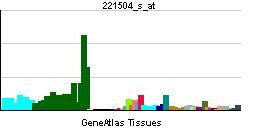Entrez 51606 | Ensembl ENSG00000047249 | |
 | ||
Aliases ATP6V1H, MSTP042, NBP1, SFD, SFDalpha, SFDbeta, VMA13, CGI-11, ATPase H+ transporting V1 subunit H External IDs MGI: 1914864 HomoloGene: 7139 GeneCards: ATP6V1H | ||
Function
This gene encodes a component of vacuolar ATPase (V-ATPase), a multisubunit enzyme that mediates acidification of eukaryotic intracellular organelles. V-ATPase dependent organelle acidification is necessary for such intracellular processes as protein sorting, zymogen activation, receptor-mediated endocytosis, and synaptic vesicle proton gradient generation. V-ATPase is composed of a cytosolic V1 domain and a transmembrane V0 domain. The V1 domain consists of three A and three B subunits, two G subunits plus the C, D, E, F, and H subunits. The V1 domain contains the ATP catalytic site. The V0 domain consists of five different subunits: a, c, c', c", and d. Additional isoforms of many of the V1 and V0 subunit proteins are encoded by multiple genes or alternatively spliced transcript variants. This gene encodes the regulatory H subunit of the V1 domain which is required for catalysis of ATP but not the assembly of V-ATPase. Three alternatively spliced transcript variants encode two isoforms of the H subunit.
